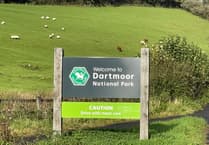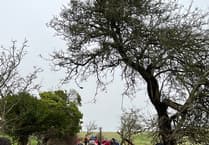MANY thanks to Judy Russell in pointing out the devastation to wild flowers carried out in the name of roadside verge maintenance (Letters, May 27).
I recently witnessed the destruction of more than a mile of Queen Anne's Lace (or Cow Parsley) along the road from Bere Alston to Gulworthy.
This plant is described by naturalist Richard Mabey as 'arguably the most important spring landscape flower in Britain' (in his definitive Flora Brittanica). In several places the debris was speckled with cut bluebell flowers.
These plants are not mere weeds. Increasingly, agricultural land is being cultivated as a uniform sward from which wild plants are excluded, leaving our roadside verges as a last refuge for biodiversity.
Animals need this variety as a source of food and cover and they use the hedgerows as a corridor when moving around the countryside. We care for our nature reserves but tend to neglect the parts in between!
Judy Russell is right to point out that cutting should not take place till after seeds have set, at the end of the flowering season. Ancient meadows were species rich and only cut in late summer at harvest time. This is a practice that we need to adopt to conserve what remains in our verges.
I accept that some cutting is needed for road safety, but this should be the minimum needed. Great swathes are being cut for no obvious purpose. Unfortunately, this is not the first year that this has been done: annual and biennial plants take several years to recover from the loss of a year's seeds.
In times of financial stringency surely this is one area of public expenditure that could be 'slashed'?
Dr Pete Mayston
Rose Cottage
Tuckermarsh
Bere Alston



